Description Btrol contains Tranexamic Acid, an antifibrinolytic agent (trans-4-(aminomethyl)cyclohexanecarboxylic acid) that prevents excessive bleeding by inhibiting plasmin-mediated fibrin breakdown. Available as capsules (250mg and 500mg) and IV injections (250mg/5ml and 500mg/5ml), it forms a complex with plasminogen, reducing fibrinolytic activity. This clear, nonpyrogenic solution (injection) or white crystalline powder (capsules) is used for various hemorrhagic conditions, offering rapid onset for both oral and IV routes, especially in surgical or trauma settings.
Ingredients
- Btrol 250mg Capsule: Tranexamic Acid USP 250mg.
- Btrol 500mg Capsule: Tranexamic Acid USP 500mg.
- Btrol 250mg/5ml Injection: Tranexamic Acid USP 250mg.
- Btrol 500mg/5ml Injection: Tranexamic Acid USP 500mg.
Drug Class Antifibrinolytic / Antihemorrhagic / Amino Acid Derivative.
Dosage Form
- Capsules (250mg, 500mg; 1 strip = 10 capsules).
- IV Injection (250mg/5ml, 500mg/5ml; 5 ampoules per pack).
Uses Btrol is prescribed for:
- Hemorrhage or risk of hemorrhage due to increased fibrinolysis or fibrinogenolysis.
- Local fibrinolysis in prostatectomy, bladder surgery, menorrhagia, epistaxis, cervical conization, dental extraction in coagulopathies, ulcerative colitis, hematuria, or GI hemorrhage.
- General fibrinolysis in prostatic/pancreatic cancer, post-thoracic/major surgery, or thrombolytic therapy complications.
- Obstetric complications like abruptio placentae or post-partum hemorrhage.
- Hereditary angioneurotic edema.
- Reducing blood loss in pediatric/adult cardiac surgery, total knee/hip arthroplasty.
Doctor’s Review Hematologists and surgeons rely on Btrol for its rapid antifibrinolytic action. As one obstetrician notes: “Btrol is invaluable in postpartum hemorrhage and surgical bleeding, quickly stabilizing patients with minimal side effects. The IV form is a lifesaver in emergencies, but renal function must be checked to avoid accumulation.”
Dosage (Follow physician’s instructions — typical guideline)
- General:
- Oral: 1000-1500mg 2-3 times daily.
- IV: 500-1000mg by slow injection (1ml/min) 2-3 times daily; or 250-500mg/day IM/IV in 1-2 doses; 500-2500mg by IV drip as needed.
- Prostatectomy: 500-1000mg IV every 8 hours for 3 days (start during surgery), then 1000-1500mg oral 3-4 times daily until hematuria resolves.
- Menorrhagia: 1000-1500mg oral 3-4 times daily for 3-4 days, starting at heavy bleeding onset.
- Epistaxis: 1500mg oral 3 times daily for 4-10 days; or apply IV solution topically to nasal mucosa via soaked gauze.
- Hematuria: 1000-1500mg oral 2-3 times daily until resolved.
- Cervical Conization: 1500mg oral 3 times daily for 12-14 days post-op.
- Dental Surgery (Coagulopathies): 10mg/kg IV pre-surgery, then 25mg/kg oral 3-4 times daily for 6-8 days.
- General Fibrinolysis: 1000mg IV 3-4 times daily.
- Hereditary Angioneurotic Edema: 1000-1500mg oral 2-3 times daily, intermittent or continuous.
- Renal Impairment:
- eGFR 60-89: 10mg/kg IV or 15mg/kg oral twice daily.
- eGFR 30-59: 10mg/kg IV or 15mg/kg oral daily.
- eGFR <29: 5mg/kg IV or 7.5mg/kg oral daily.
- Cardiac Surgery (Adults): 15mg/kg IV pre-surgery, then 4.5mg/kg/h infusion during surgery; 0.6mg/kg in heart-lung machine prime.
- Knee/Hip Arthroplasty: 15mg/kg IV pre-incision/tourniquet release, repeat every 8 hours for 16 hours post-initial dose.
- Pediatrics: 20mg/kg/day oral or IV; limited data for cardiac surgery.
In Case of Overdose Overdose may cause dizziness, headache, hypotension, or convulsions. Seek immediate medical attention. Management is supportive (e.g., IV fluids for hypotension, anticonvulsants for seizures); dialysis may aid removal in renal failure. Monitor vital signs and neurological status.
Missed Dose Take oral dose as soon as remembered unless close to the next dose; do not double up to avoid overdose risks like seizures. IV doses are given by professionals, so misses are rare—reschedule promptly if delayed. Consult your doctor for adjustments.
How to Use
- Capsules: Swallow whole with water, with or without food; take at consistent times.
- IV Injection: Administer slowly (1ml/min) to avoid hypotension; do not give IM if labeled IV-only.
- IV Infusion: Dilute in electrolyte, carbohydrate, amino acid, or Dextran solutions; add heparin if needed; infuse over prescribed time.
- Do not mix with blood or penicillin-containing solutions.
- Use reconstituted IV solution immediately or store at 2-8°C for max 24 hours.
- Complete treatment course unless side effects occur.
When Not to Use Avoid Btrol if:
- Hypersensitive to Tranexamic Acid or excipients.
- Active thromboembolic disease (e.g., DVT, pulmonary embolism, cerebral thrombosis).
- Fibrinolytic conditions from consumption coagulopathy (unless acute bleeding with fibrinolytic dominance).
- Severe renal impairment (eGFR <29 without dose adjustment).
- History of convulsions or active intravascular clotting.
- Subarachnoid hemorrhage (risk of cerebral edema/infarction).
- Intrathecal/intraventricular or intracerebral use.
Side Effects Common:
- Nausea, vomiting, diarrhea.
- Dizziness.
Uncommon / Severe (Stop and seek medical help):
- Allergic reactions (rash, anaphylaxis).
- Convulsions (especially with rapid IV or misuse).
- Visual disturbances (blurred vision, color impairment).
- Hypotension/malaise (post-fast IV injection).
- Arterial/venous thrombosis at any site.
Precautions & Warnings
- Administer IV slowly to prevent hypotension.
- Monitor for visual changes (e.g., blurred vision, color issues); stop if they occur and conduct eye exams (acuity, color, fundus, fields).
- Risk of urethral obstruction in upper urinary tract hematuria—use cautiously.
- Assess thromboembolic risk (family history, prior events) before use; limit to strong indications with supervision.
- Avoid in irregular menstrual bleeding until cause is identified.
- Use cautiously with oral contraceptives (thrombosis risk) or in DIC (restrict to fibrinolytic bleeding with lab oversight).
Drug Interactions
- Anticoagulants (e.g., heparin, warfarin): Requires strict monitoring due to competing effects.
- Estrogens: Theoretical risk of increased thrombus formation.
- Thrombolytics (e.g., streptokinase): May antagonize Tranexamic Acid’s antifibrinolytic action.
- Avoid combining with prothrombotic agents without specialist oversight.
Food Interactions
- No significant food interactions; capsules can be taken with or without meals.
- Maintain hydration to support renal clearance, especially with IV use.
- Avoid alcohol if it worsens GI side effects like nausea.
Storage/Disposal
- Capsules: Store at 15-30°C, protect from heat, sunlight, and moisture.
- Injection: Store at or below 25°C, away from heat and sunlight; do not use if cloudy or leaking.
- Keep out of reach of children; dispose via pharmacy returns—do not flush.
- Reconstituted IV solution: Use immediately or store at 2-8°C for max 24 hours.
Quick Tips
- Take oral doses at regular intervals for steady levels.
- Report vision changes or seizures immediately.
- For epistaxis, ask about topical gauze application.
- Stay hydrated to ease nausea or diarrhea.
- Inform surgeons of use before procedures to manage bleeding risks.
Disclaimer This information is provided for educational purposes only and does not replace medical advice. Use only under the supervision of a licensed physician. Do not self-medicate.

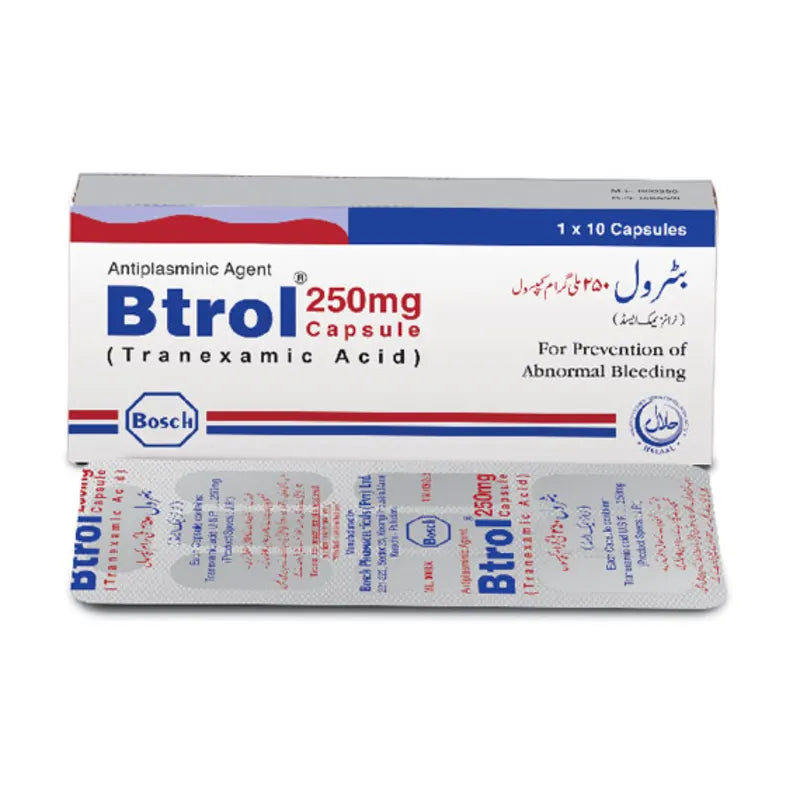
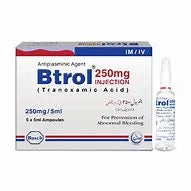
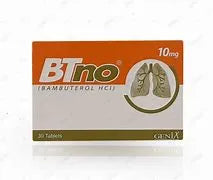
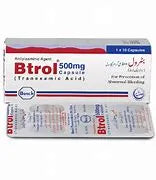

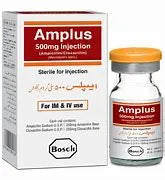
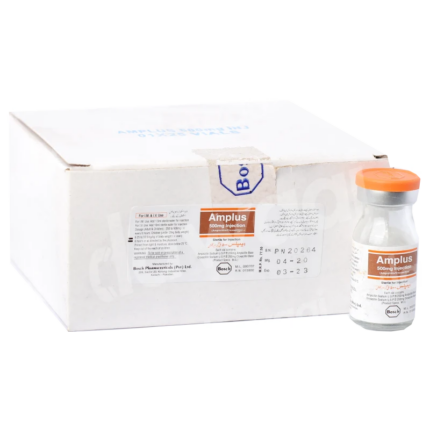
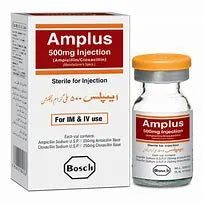
Reviews
There are no reviews yet.